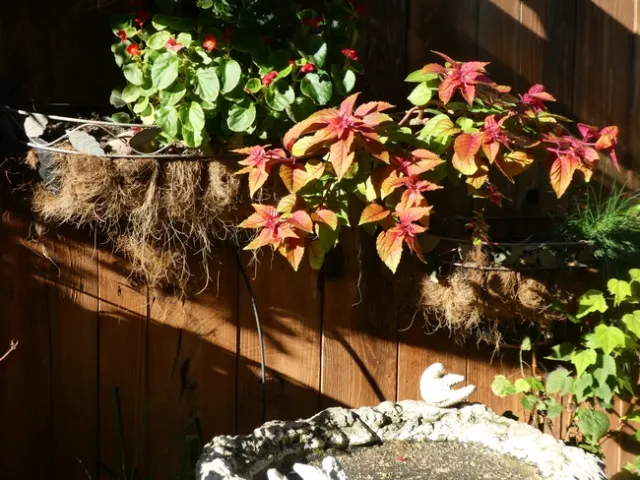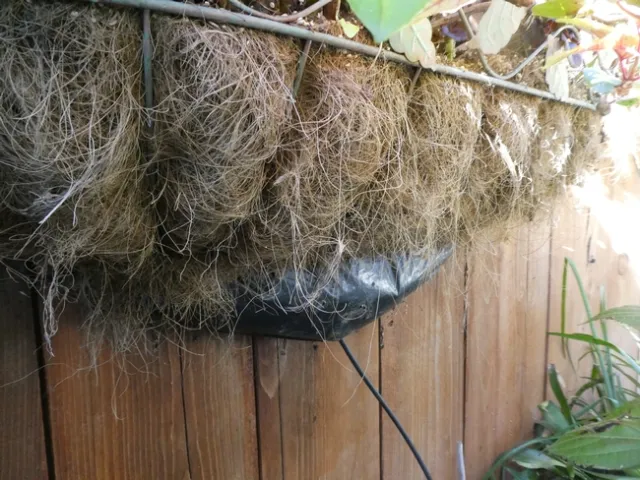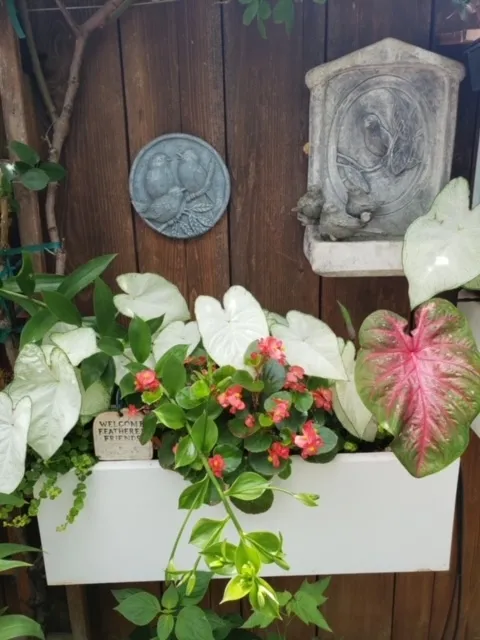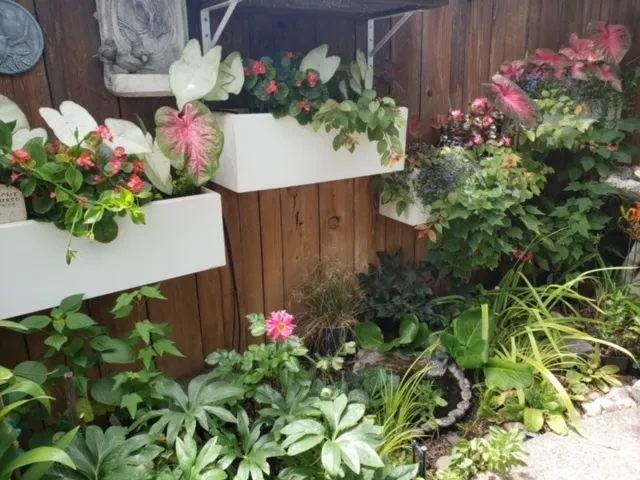Defeating the Blue Jay
I enjoy birds inhabiting my backyard. Also, I like the natural look of Coir fiber lining hanging baskets and the wire planters mounted along my wooden fence. Commonly known as coconut fiber, this material is extracted from the hard outer husks of coconuts, with India and Sri Lanka fulfilling over 90% of the world's demand. Coconut fiber is used not only for pot liners but to make brooms and brushes, ropes, and floor mats; to stuff car seats and mattresses; and to control soil erosion.
Its rot-resistant fiber, when used as a pot liner, provides plants with good drainage and air circulation. But for me, there is an observable downside — these durable liners seldom survive Blue Jays. Instead, the coconut fiber provided the Jays easily accessible nesting material.
In just a couple of seasons, my fiber-lined planters took a beating as nests appeared in a side yard orange tree. Amazed I stood at a window watching Coir threads being pulled out by these beaked thieves, who one flight at a time deposited their stash into the waiting branches. The photographs below tell the planter's tale.


Eventually, as the finches frequenting my bird feeder became prey and the doves and Quail no longer walked the fence, I knew the time had come to defeat the ambitious Blue Jays.
The fix was simple. Out with the natural look of coconut fiber. In with the PVC. Once again I'm enjoying a variety of birds inhabiting my backyard. Here's a look at the window box planters along the fence.


For more information on coconut fiber including photographs, charts, and scientific data, visit https://www.sciencedirect.com/topics/engineering/coconut-fiber
